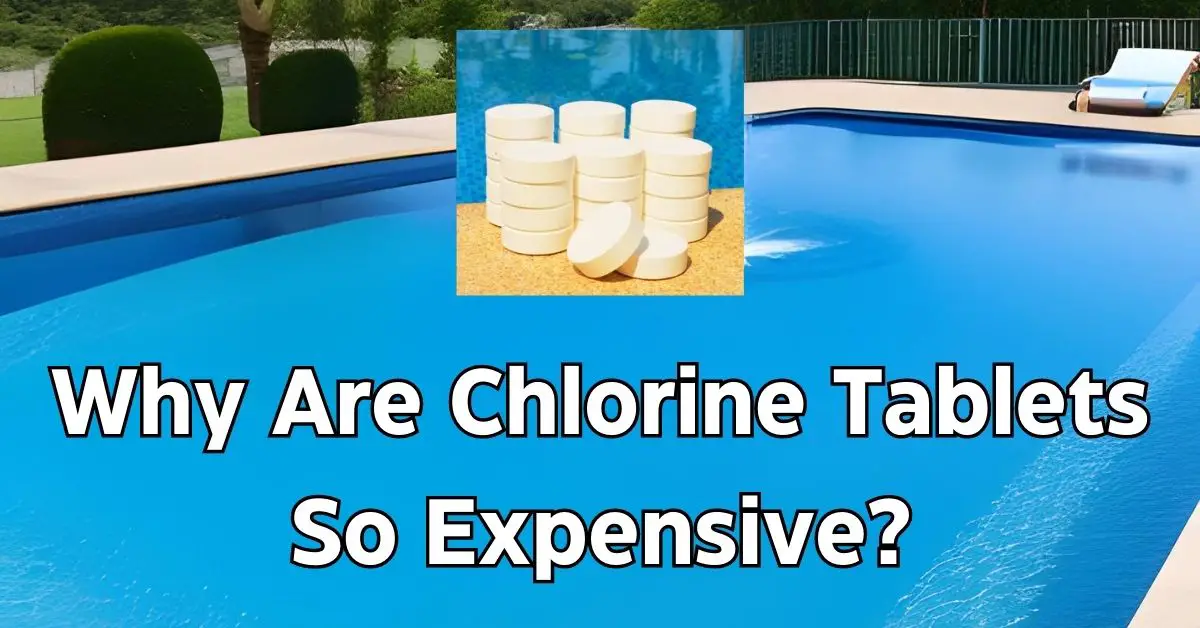Are you tired of paying exorbitant prices for chlorine tablets? You’re not alone. In recent years, the cost of chlorine tablets has skyrocketed, leaving consumers and businesses struggling to keep their pools and water systems clean and safe. But why are chlorine tablets so expensive?
In this article, we will explore the factors that contribute to the increase in price and the impact it has on the water treatment industry. From supply and demand to transportation costs and raw material costs, we will delve into the issues affecting the affordability of chlorine tablets.
If you’re looking for the best chlorine tablets for your swimming pool or hot tub, it’s important to consider factors such as price, effectiveness, and ease of use.
We will also examine the potential health risks associated with the use of low-quality chlorine tablets and explore alternatives to traditional chlorine tablets. So, sit back, relax, and let’s dive into the problem of why chlorine tablets are so expensive.
Why Are Chlorine Tablets So Expensive?
Chlorine tablets are a widely used product in the water treatment industry, primarily in swimming pools, hot tubs, and drinking water. They are essential in maintaining clean and safe water by killing harmful bacteria and viruses. However, the cost of chlorine tablets has significantly increased in recent years, leading to concerns for both consumers and businesses.
Supply and Demand:
Several factors contribute to the increase in the price of chlorine tablets, including supply and demand, transportation costs, and raw material costs. The COVID-19 pandemic has significantly increased the demand for chlorine tablets, with more people spending time at home and the surge in demand for swimming pools and hot tubs.
At the same time, the shutdown of manufacturing facilities due to the pandemic has caused a decrease in the supply of chlorine tablets. This increase in demand and decrease in supply has caused a significant increase in the price of chlorine tablets.
Transportation Costs:
Transportation costs also play a role in the increase in the price of chlorine tablets. The shortage of truck drivers and the increase in fuel prices have led to higher transportation costs for chlorine tablets. With fewer truck drivers available, shipping costs have increased, leading to higher transportation costs for chlorine tablets.
Raw Material Costs:
The cost of raw materials used in the production of chlorine tablets has also increased, leading to higher costs for manufacturers. Shortages in the supply chain due to the pandemic have led to higher costs for raw materials, causing the price of chlorine tablets to increase.
Impact of Expensive Chlorine Tablets
The increase in the cost of chlorine tablets has caused affordability issues for homeowners and small businesses. This can lead to a decrease in the use of chlorine tablets, which can result in water that is not properly disinfected and sanitized.
Public swimming pools and water parks rely on chlorine tablets to keep their water safe and clean. However, with the increase in the cost of chlorine tablets, these businesses may not be able to afford them, leading to concerns about the safety and cleanliness of the water.
In addition to affordability issues, there are also potential health risks associated with the use of low-quality chlorine tablets.
Low-quality chlorine tablets may not contain the proper amount of chlorine to effectively kill harmful microorganisms in the water. This can lead to potential health risks, including skin irritation, respiratory problems, and gastrointestinal issues.
There are alternatives to chlorine tablets that can be considered, such as saltwater chlorination systems, ultraviolet (UV) disinfection systems, and ozonation systems. These alternatives can provide effective water treatment while reducing the cost of maintenance.
Conclusion
In conclusion, the increase in the cost of chlorine tablets is a concern for both consumers and businesses. The factors contributing to the increase in price, including supply and demand, transportation costs, and raw material costs, have made it difficult for some to afford them.
The potential health risks associated with the use of low-quality chlorine tablets also add to the concern. Exploring alternatives to chlorine tablets may be a solution to reduce the cost of water treatment while maintaining the safety and cleanliness of the water.
